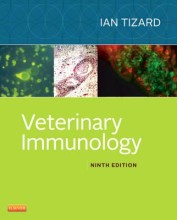Immune defence of mammals against bacterial pathogens - Anatomical defence; keeping microbes at a distance
7 important questions on Immune defence of mammals against bacterial pathogens - Anatomical defence; keeping microbes at a distance
Two major physical barriers
2. Epithelium
Pattern recognition receptors (PRR)
- Recognize MAMP's (Microbe-associated molecular patterns).
- Expressed by enterocytes, Paneth cells and immune cells (DC's)
5 Ways in which the PRR signalling is regulated
2. TLR localization
3. Apical and Basolateral differentiated signalling
4. Negative feedback regulation of NF-kB pathway
5. Attenuation of NF-kB activation by commensal bacteria
- Higher grades + faster learning
- Never study anything twice
- 100% sure, 100% understanding
TLR expression regulation
TLR negative feedback
Commensal bacterial TLR regulation
- Salmonella can inhibit NF-kB pathway by bloking degradation of IkBa
Carpet wormhole effect
The question on the page originate from the summary of the following study material:
- A unique study and practice tool
- Never study anything twice again
- Get the grades you hope for
- 100% sure, 100% understanding




























